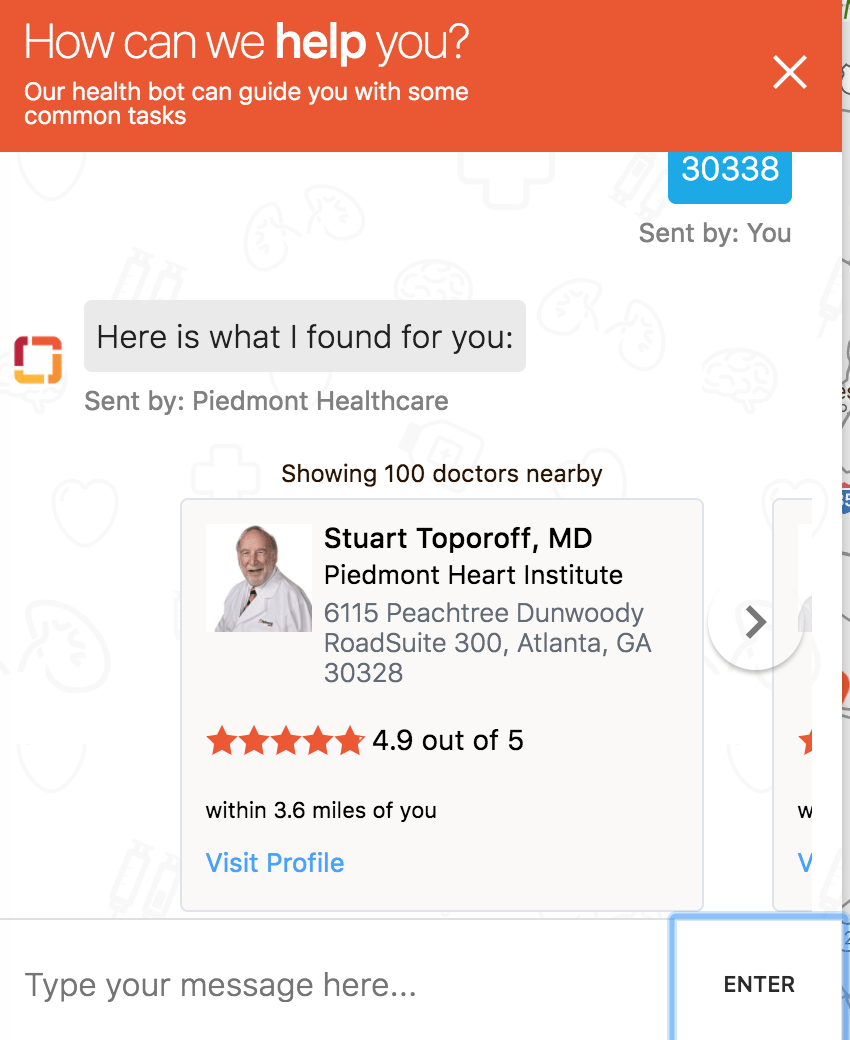Artificial Intelligence: A Consumer’s Guide to Your Healthcare Organization’s Website
// By Jane Weber Brubaker //

Brian Gresh, president of Loyal
The media, including social media, are buzzing about AI, or artificial intelligence. As of this writing in late November, the top trending article on Facebook is “Facebook Is Using Artificial Intelligence to Spot Suicidal Tendencies in Its Users.” On LinkedIn, it is “Where Will AI Increase and Decrease Costs in Healthcare?”
Is AI just the latest craze, or does it have potential to positively impact healthcare? Brian Gresh, newly appointed president of Loyal, and former executive director, digital and content marketing at Cleveland Clinic, is betting that AI-enabled digital tools will turn information into insight for consumers, and help them make better healthcare decisions. “But beyond that,” he asks, “how do we package that information in a way that makes it all seem less daunting for the consumer to get answers, easier for them to process and make an informed decision?”
Founded as Transparently in 2015 and recently rebranded as Loyal, the company’s earliest solution, Empower, enables healthcare providers to easily publish star ratings and comments from patients, giving consumers the tools and information they need to evaluate and choose physicians.

Chad Mallory, founder and CEO, Loyal
Loyal’s latest solution, Guide, takes information gathering to the next level, using artificial intelligence. “Transparently was founded on the idea that consumers need access to more information to make the best healthcare decisions,” says Chad Mallory, founder and CEO. “We learned that more information wasn’t necessarily enough. Consumers also want to be walked through this complicated journey.”
Can machine learning help consumers better navigate healthcare’s complexities? Perhaps it’s a start. Here, we’ll see how Loyal implements Guide on hospital websites, and how consumers and organizations benefit.
How Guide Works
Guide is an AI-enabled chatbot designed specifically for healthcare, engaging consumers in dynamic conversations. Piedmont Healthcare in Metro Atlanta is an early adopter. From its website, I take Guide for a test drive to see how it works.
From the Piedmont.org homepage, I click “Locations” on my desktop computer. I can also access Guide from my smartphone. A chat window opens: “Hi there!” it says. “Welcome to Piedmont Healthcare. Can I help answer something for you?”

Clicking the chat box opens the chat window, which presents several options:
- Find a Doctor
- Pay my bill
- Speak to an agent
- Ask us anything
I choose “Find a Doctor” and navigate through subsequent windows to narrow my search. First I select Heart, then Cardiology.
At this point, Guide asks me for my zip code, and based on that, offers 100 specialists near me. I can scroll through each individual profile and click profiles that interest me.

Instead of selecting one, I’m hoping to find more specific information about physicians who treat a particular heart condition. I type in “Afib”. The chatbot says, “I haven’t learned how to handle that yet,” and refers me back to the main menu.
A Learning Process
Machine learning requires training. The first step is to populate Guide with an organization’s available data such as providers, locations, services, and hours, and then begin training it based on assumptions about how people will interact with it. Humans do the training, a service Loyal provides its clients. “There’s a core set of questions patients ask,” Gresh says. “We want to make sure answers are correct.” Over time, the AI gets better at interpreting variations in questions and providing the right answers. This general learning can then scale to all clients.
“The first time we roll this out, we try to predict what people are going to ask. That can get you 70 percent of what we call intent,” says Mallory. “Where machine learning comes in is in the ability to look at hundreds of thousands of these messages and learn what the person asked, and what the outcome was, and learning from there.”
Understanding the nuances of language is part of the training. For example, a person named Bill is not the same as someone wanting to pay his or her bill; “nearest” urgent care means the same as “closest” urgent care; registered nurse, RN, and r.n. refer to the same person. This type of nuance, once learned, then becomes universally available to any organization using Guide.
Customizable Templates Solve Common Pain Points
The technology is adaptable and can be built and trained to address various online tasks, such as paying a bill, scheduling an appointment, or finding a doctor. “We can create different templates for the different scenarios or problems we’re trying to solve on a site,” says Gresh.
Online bill payment is a task that often causes frustration among consumers, and has been a challenge for many health systems, putting pressure on overburdened call centers to resolve issues. Piedmont is beginning to use the Guide chatbot to address patient billing questions. Gresh explains that when a user selects “chat with a billing agent”, the chatbot hands off to a human.

A person in the billing department then engages with the user via the chat window. The benefit is that the entire conversation is captured, helping the AI learn over time how to respond correctly.
“As these conversations happen, we’re capturing all of that data. All of those different scenarios then get fed into the AI and it starts to get better and better at understanding the different contexts for those questions,” Gresh says.
Gresh envisions using Guide for lead generation, but emphasizes that it is first and foremost a tool to help consumers. “We’ve designed Guide to really be a great user experience and to be helpful first before it actively asks you for information,” he says. “We want to only ask for information when it’s most relevant, if you want more information, or want to schedule an appointment.” The solution is HIPAA compliant and information provided by consumers can be exported into a CRM or marketing automation tool.
Piedmont saw positive results after installing Guide on certain billing pages with high bounce rates. “People were hitting the pages and leaving quickly,” says Gresh. “You can make some assumptions that they were having trouble finding what they were looking for.” Once Guide was installed, the bounce rate dropped from more than 70 percent to less than 20 percent.
Loyal is equally focused on customer experience and client success. “We want to create that balance between great user experience and providing systems with a better return on investment,” say Gresh. “Every time Guide can help resolve somebody’s questions on the site without human interaction, that’s resources saved for the system.”
What motivated Brian Gresh to leave Cleveland Clinic and join a health tech innovator?
“I could not have had a better experience than working at the Cleveland Clinic and at the University of Utah before that. I learned a lot and it made it very difficult to make this decision. But ultimately I felt there were some opportunities to have a bigger impact than just within one organization. My goal is to not only create great products but to have a positive impact on patient experience. I think ultimately people still have trouble getting connected with the appropriate care. We do a really good job in the health industry of creating a lot of information. And as marketers we’ve done a phenomenal job of making it very search friendly. But beyond that how do people know how to choose the right care? And we feel like this is going to impact that.”
Jane Weber Brubaker is a contributing editor for eHealthcare Strategy & Trends and chair of the eHealthcare Leadership Awards.

